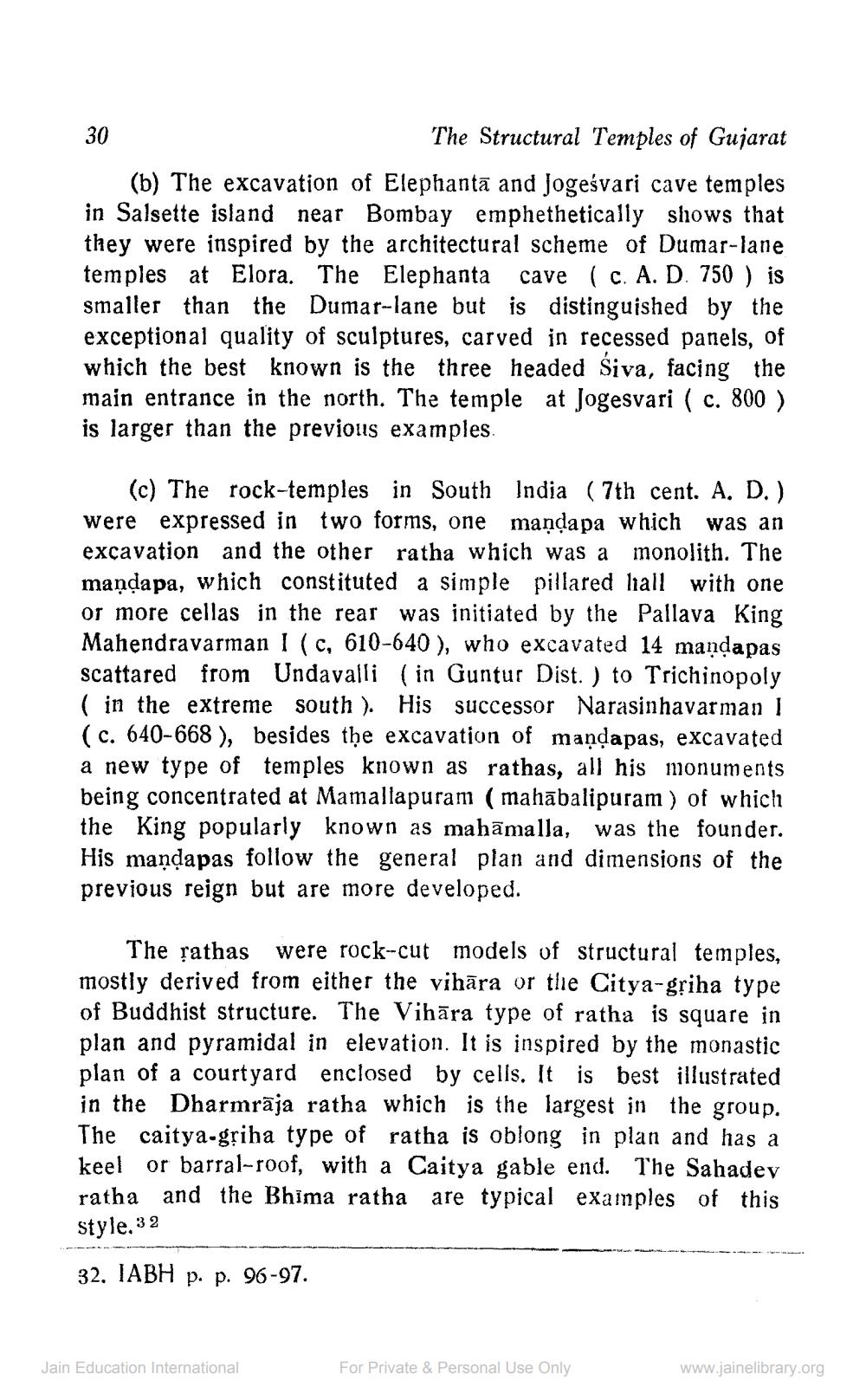________________
30
The Structural Temples of Gujarat (b) The excavation of Elephantā and Jogeśvari cave temples in Salsette island near Bombay emphethetically shows that they were inspired by the architectural scheme of Dumar-lane temples at Elora. The Elephanta cave (c. A. D. 750 ) is smaller than the Dumar-lane but is distinguished by the exceptional quality of sculptures, carved in recessed panels, of which the best known is the three headed Siva, facing the main entrance in the north. The temple at Jogesvari ( c. 800 ) is larger than the previous examples.
(c) The rock-temples in South India (7th cent. A. D.) were expressed in two forms, one mandapa which was an excavation and the other ratha which was a monolith. The maņdapa, which constituted a simple pillared liall with one or more cellas in the rear was initiated by the Pallava King Mahendravarman I (c, 610-640), who excavated 14 mandapas scattared from Undavalli (in Guntur Dist. ) to Trichinopoly ( in the extreme south ). His successor Narasinhavarman 1 (c. 640-668 ), besides the excavation of maņdapas, excavated a new type of temples known as rathas, all his monuments being concentrated at Mamallapuram (mahābalipuram) of which the King popularly known as mahāmalla, was the founder. His mandapas follow the general plan and dimensions of the previous reign but are more developed.
The rathas were rock-cut models of structural temples, mostly derived from either the vihāra or the Citya-gộiha type of Buddhist structure. The Vihāra type of ratha is square in plan and pyramidal in elevation. It is inspired by the monastic plan of a courtyard enclosed by cells. It is best illustrated in the Dharmrāja ratha which is the largest in the group. The caitya-gộiha type of ratha is oblong in plan and has a keel or barral-roof, with a Caitya gable end. The Sahadev ratha and the Bhima ratha are typical examples of this
style. 3 2
32. IABH p. p. 96-97.
Jain Education International
For Private & Personal Use Only
www.jainelibrary.org




